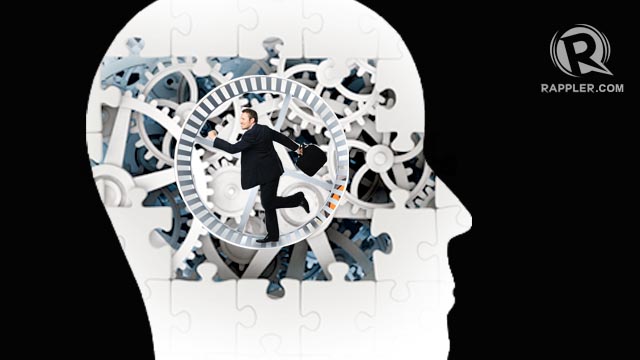SUMMARY
This is AI generated summarization, which may have errors. For context, always refer to the full article.

At the top of the list of things that bore me to the point that I would rather watch dust accumulate on my monitor, is reading a multi-page biodata.
It is amazing how much information people put in there. I leave that up to you to figure out what those are but suffice it to say that you need not include how many times your name and your work appear in Google or any other search engines. And do you really need to include that you were the valedictorian in kindergarten, elementary or even high school, especially when you are already beyond your 20s?
I have a strange proposal to make CVs more interesting and perhaps, to a certain extent, a more reliable way of gauging a person’s character before you work with them. I suggest that it include “habits.”
You don’t need to be a scientist to know what habits are. Habits are ways (whether of thinking or doing) that you have done long enough to be ingrained and thus, will take a real effort to break. But what do some scientific studies on habits reveal that would make me suggest its own distinct place in the landscape of your biodata?
A habit is nature’s way of “automating” your response to certain things. In terms of brain circuitry or system (not “brain parts”), a study in the journal Neuron in 2010 identified two main brain parts that are active when you are in the process of forming a habit. One is for thinking which is the dorsomedial striatum and the other is for movement. Experiments on mice who have the same brain circuitry show that as mice ran a maze looking for reward, their thinking part is more active compared to the movement circuitry. But as they get used to what works, based on the correct and thus, rewarded choices they made, the movement circuitry becomes more active manifesting behaviorally as an “auto pilot” response.
Thus, habits really require much less (if any) conscious thinking but they are the ones that become cemented in your head for a long time as part of your response to your environment which includes people, places, things and ideas.
Under stress, hormones act together to make you fall into old habits. Under certain kinds of stress when both cortisol and adrenaline are produced in your body in amounts that interact with each other, your will is suppressed and it is easier for the brain to give in to old habits as a response. Exercising your will means that you do not automatically give in to your old ways unless you have consciously validated them to be relevant and make for a suitable response to the stressful situation.
In a 2012 study published in 2012 in the journal Neuoscience, they found out that if you are stressed in a way that adrenaline and cortisol levels are entwined in a tango in your brain, your brain takes the path of least resistance and that points to habit. Too bad if that habit is binge eating. Work of course, will mean stress on many levels. You would want to see the default mode of a possible co-worker in these times.

Good habits deploy as reliably as bad ones in stressful times. While the above reason cites findings for bad habits taking over when we are stressed, those who had good habits like eating oatmeal for breakfast instead of junk, stuck to eating oatmeal for breakfast under the same stress. This was from a recent study published in the June 2013 issue of the Journal of Personality and Social Pyschology by researchers from the University of Southern California.
As we get older, we have more brain receptors that favor the making of habits than the receptors for making new ones. Brain scientists have long observed that there are two brain receptors NR2A and NR2B that seem to play very important roles in sculpting memory. NR2A reduces the communication between neurons while NR2B strengthens and lengthens it.
In a study in the Journal Scientific Reports released early 2013, they confirmed that kids have more NR2Bs, enabling them to learn new things faster. However, age decreases this number in relation to the NR2A. While NR2A enables us to learn at a comparatively slower rate compared to when we were kids, more NR2A makes us better in memory storage. “Better” means our brains hold on to what worked before and just discard “useless” or simply “noisy” information. What we hold on to is what we call habits. This is part of the neural basis of why it is harder to get rid of habits as you get older. This, I think, also partly accounts for why older people in the office are known to be the vanguards of old ways and the strongest resistors of change compared to the younger ones.
There is no one formula for how long it takes to form a habit. Even more importantly, how long it takes to successfully break from one. According to the book of psychologist Jeremy Dean, “Making Habits Breaking Habits” (2013), it takes an average of 66 days to form a habit ranging from 20 days to make drinking water to 254 days for others, depending on the habit. No number was tossed around, not even a range for how long it will take to break one. But if the first 4 reasons above hold, then it will substantially take longer to break a habit than to make one. That also seems to explain why shedding an old way or old belief takes longer and brings more “brain pain” than learning a new one.
Now knowing the inner workings of a “habit,” we realize that we should be very deliberate in what we become habituated to – whether it is an act, a place, person, or belief. As humans, we are wired for economy to form habits and not rethink everything from “scratch.” According to Jeremy Dean, 50% of our everyday lives are governed by habit. But we all know that creativity and enlightenment, both valued to bring meaning to the enterprise of being human, are only achieved when you take the leap, that big definitive break from habit.
How do you then live your life knowing when to shift your gears for habits and leaps? How do you not clutter your brain with everything that you want to connect anew and yet still be creative enough to intentionally, passionately carefully, define the subject of that biodata that is no other but YOU? – Rappler.com
Maria Isabel Garcia is a science writer. She has written two books, “Science Solitaire” and “Twenty One Grams of Spirit and Seven Ounces of Desire.” Her column appears every Friday and you can reach her at sciencesolitaire@gmail.com.
Gears image from Shutterstock
Hamster Wheel Businessman image from Shutterstock
Add a comment
How does this make you feel?
There are no comments yet. Add your comment to start the conversation.